I found this idea and decided to try it out.
Each student created a little notebook that they decorated and I placed an inquiry letter inside. This letter outlines 4 easy steps on how to start your own inquiry over the summer. We also discussed ideas, how to use the book, and places they may want to store it so it does not get lost!
I asked that they share their discoveries with us in September!
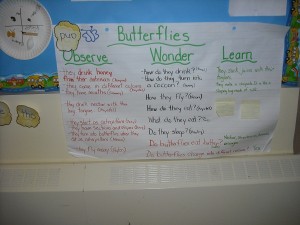 Our Inquiry on Growth and Change integrated the discovery of Butterflies.
Our Inquiry on Growth and Change integrated the discovery of Butterflies.
We created OWL (KLW) chart to see what the children already knew and had previously observed about butterflies.
We started asking questions about butterflies and observed the caterpillars in their jars and later they began forming their chrysalises. It was a great time to review questioning and how to formulate one. Once we discussed and read about butterflies the children began to develop deeper questions. For example; I wonder if butterflies can fly? to questions like… I wonder how they know when their enemies are coming? We also reviewed diagrams and how to label parts.
We created a chart to record how long it takes (passage of time) for the butterflies to change; from caterpillar to chrysalis, and chrysalis to butterfly. Some did not change all at the same time, and we compared our observations of change to what had been noted in videos and readings.
Students documented their observations in their journals.
We created an “I wonder” binder for the centre where children freely recorded their questions.
The children, along side the educators researched our questions through books, internet, and through short YouTube videos.
At the craft centre, children had the option to show their learning through recreating the life cycle with natural materials found outside to represent the different stages–real leaves, sticks, tree seeds for caterpillar bodies!
In the end, the children communicated to us their new learning through a written response and oral discussion. We released the butterflies at the 3 week period and we read an aboriginal legend about whispering a wish when you release the butterfly.
With all of the gardens beginning to grow now that nice weather has finally arrived, the students in our Full Day Kindergarten class are excited about plants, both flowers and food. One of the children brought in pictures of her family’s food garden and showed it around the classroom. My teaching partner and I decided to change our dramatic play centre to a grocery store to capitalize on the students interest in the picture and how food grows.
We gathered all of the plastic food, made store signs, printed labels for shelving and went to the library to find books on the food groups. We also made up sheets for the students to print, or draw, their own grocery lists, as well as their own receipts. We set up after school, and today, we made a big “production” of opening our store. The children loved it!
The Ontario Early Years Policy Framework is available on the Ministry of Education Website in pdf format. Below is a description from the website indicating the content of the resource. Educators involved with children for ages 0-6 should have a read through this invaluable resource.
Ministry site states:
The framework is supported by a set of principles and is meant to provide strategic direction to our early years partners both within and outside of government.
This framework also identifies priority areas for action. Our immediate focus will be to:
- continue with the implementation of full-day kindergarten by September 2014
- create an effective approach to implementing Best Start Child and Family Centres by September 2014
- improve the delivery of children’s speech and language services
- stabilize and transform the child care sector.
Yesterday, one of our kindergarten students brought in a dinosaur made of scrap metal. He had received it as a gift over the weekend, and was so excited to show all of his friends at school. He brought it into the classroom in the morning and the children instantly began talking about dinosaurs. My teaching partner and I had them tidy up and meet us on the carpet. We allowed the student to tell us all about the dinosaur and then had a sharing time for all of the children to tell us what they wished to about dinosaurs. It amazed us how much they knew! We knew it was a wonderful opportunity to begin some inquiry based learning! We could sat on the carpet listening to the students for hours, but instead, we decided to quickly set up a few activities for them to actively share their knowledge instead. As the students were chatting on the carpet, and passing around the metal dinosaur, I set up the writing centre with pencil crayons, markers, pencils and writing paper so they could create stories with their knowledge. I also got out a large piece of mural paper so we could paint a scene where dinosaurs may have lived. In our book centre, I quickly gathered all of the dinosaur stories we had and put them in the centre of that carpet for the children to look at.
Later during the day, after nutrition break was finished, I set up some creative art centres for the students. I had printed pictures of dinosaurs for the children to do marble painting, set out toilet paper rolls for them to make 3D dinosaurs and put out construction paper/glue/scissors/markers for them to create their own dinosaurs. A small group of children also wanted to help finish the mural we had begun in the morning.
By the end of the day, we had created a dinosaur mural displaying our art, read 2 non-ficiton books about dinosaurs, hung several stories the children had created throughout the classroom and had time to share all of their knowledge that they already had about dinosaurs. The children were engaged in all of the centres throughout the day and are excited to continue to learn about dinosaurs.
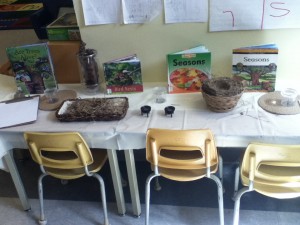 We are currently working on growth and change as an inquiry focus. I have selected materials that we have found in nature as well as some science items like worms, frogs, chicken embryos, and grasshoppers for the children to examine. We have studied some of them using our KWL chart—becoming researchers and looking in books, and on the internet to answer our “I wonder” questions. Through this learning process, children have been exposed to several types of non-fiction books (we compared fiction and non-fiction), learned how to journal their observations with adult support, and have drawn diagrams with labels. The materials are left for them to explore during our learning block of play. As children explore I will often place myself into the space to hear their conversations, to encourage them to record what they see, and to ask open-ended questions about their thoughts or to extend their learning. Next we will be adding our Butterflies to the collection!
We are currently working on growth and change as an inquiry focus. I have selected materials that we have found in nature as well as some science items like worms, frogs, chicken embryos, and grasshoppers for the children to examine. We have studied some of them using our KWL chart—becoming researchers and looking in books, and on the internet to answer our “I wonder” questions. Through this learning process, children have been exposed to several types of non-fiction books (we compared fiction and non-fiction), learned how to journal their observations with adult support, and have drawn diagrams with labels. The materials are left for them to explore during our learning block of play. As children explore I will often place myself into the space to hear their conversations, to encourage them to record what they see, and to ask open-ended questions about their thoughts or to extend their learning. Next we will be adding our Butterflies to the collection!
In continuation with our beautiful stuff project, the children used real wood piece to create home, buildings, bridges and other various structures. The children created, draw their designs, labelled some parts, glued and painted their designs. It was a great and fun experience.
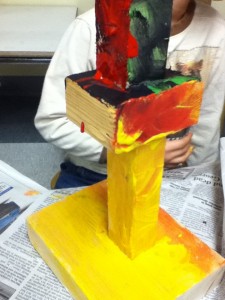
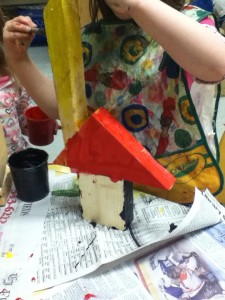
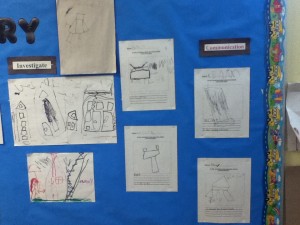
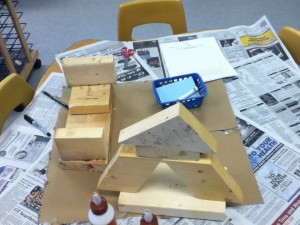
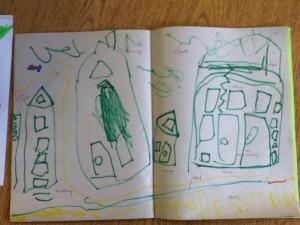 This student independently drew a picture of his neighbourhood when we were writing in our journals. He carefully selected shapes that are parts of a building, told me about the buildings-some stores and houses and added stairs that go to the bed on the top floor (blueprints show stairs!).
This student independently drew a picture of his neighbourhood when we were writing in our journals. He carefully selected shapes that are parts of a building, told me about the buildings-some stores and houses and added stairs that go to the bed on the top floor (blueprints show stairs!).


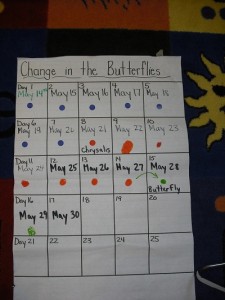

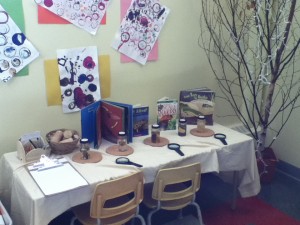
Recent Comments